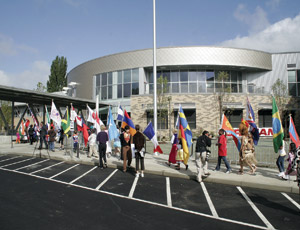A Seattle K-8 public school built under state sustainability protocols had to be shut down after staff and students complained of annoying odors. When toxicology testing showed that high pH and moisture content in the concrete flooring had reacted with carpet adhesive and backing to produce methyl hexanol, a volatile organic compound, the school district had no choice but to carry out expensive repairs.

Opened in September 2009, the $37-million South Shore School struggled with complaints about the smell until closing in April 2010. The toxicology investigation confirmed the extent of the problem.
The only fix requires the 139,000-sq-ft school to tear out all the carpet, grind the mastic off and remove the top 1?16th inch of concrete to make it more porous, says Bill Martin, the district’s facilities director. To ensure the problem doesn’t occur again, an epoxy sealant will be applied to the concrete as a moisture barrier before installation of the new carpet, so the school can open again next fall.
The district has sued general contractor Graham Contracting Ltd., Seattle, even though Martin says Graham has done “an outstanding job.” Ken Snyder, president of Graham, says, “When you’ve got moisture and it starts leeching, it gets alkaline and starts reacting with the glue.” Snyder says he questions why the six-month curing time wasn’t enough to let the moisture out. “It’s anybody’s guess,” he says.
There’s no cost information yet on the repairs, which the school is conducting. The school district is staging the work to allow staff back in by August and students back in by Sept. 8.



Post a comment to this article
Report Abusive Comment